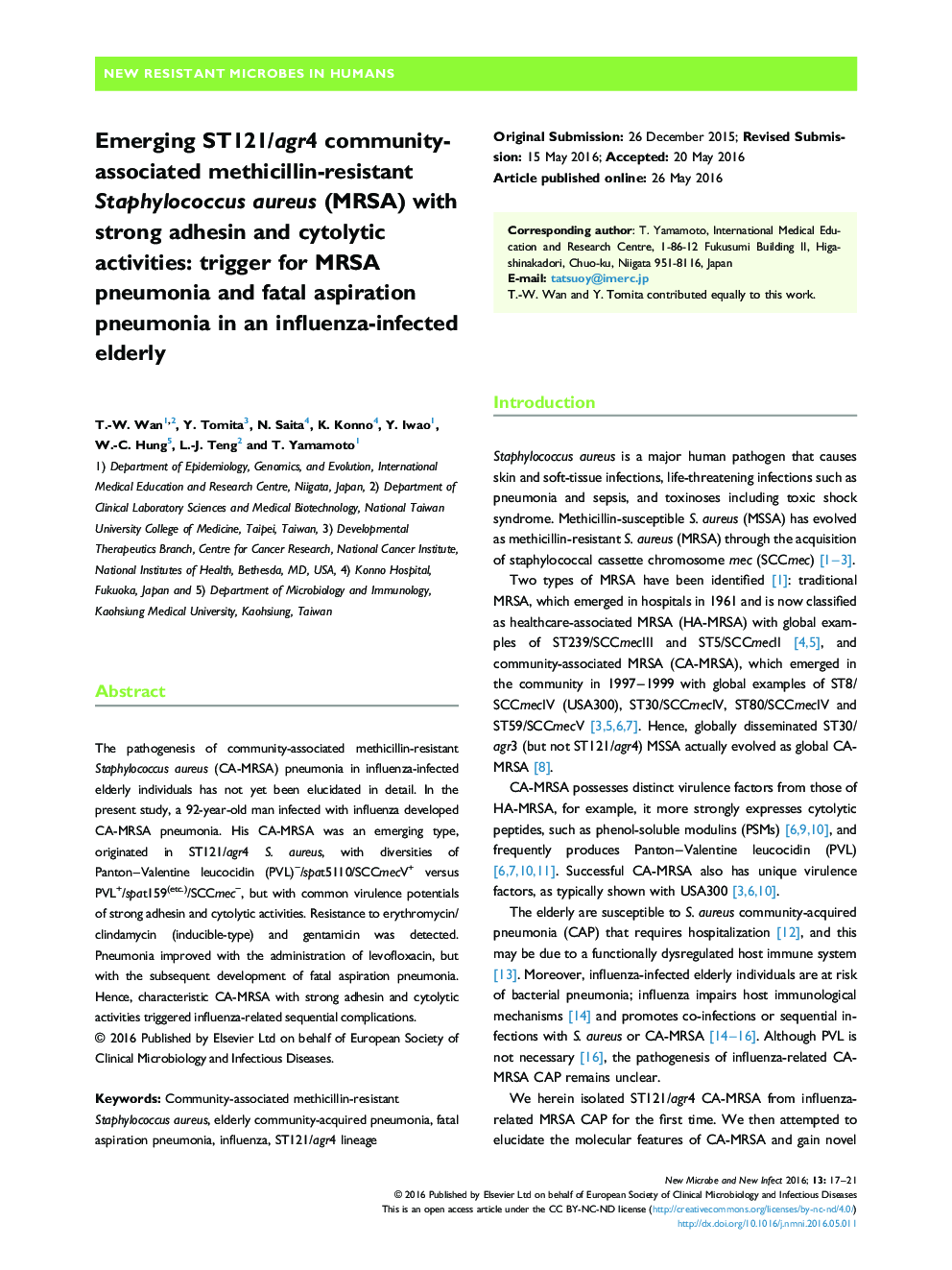| Article ID | Journal | Published Year | Pages | File Type |
|---|---|---|---|---|
| 3417430 | New Microbes and New Infections | 2016 | 5 Pages |
The pathogenesis of community-associated methicillin-resistant Staphylococcus aureus (CA-MRSA) pneumonia in influenza-infected elderly individuals has not yet been elucidated in detail. In the present study, a 92-year-old man infected with influenza developed CA-MRSA pneumonia. His CA-MRSA was an emerging type, originated in ST121/agr4 S. aureus, with diversities of Panton–Valentine leucocidin (PVL)−/spat5110/SCCmecV+ versus PVL+/spat159(etc.)/SCCmec−, but with common virulence potentials of strong adhesin and cytolytic activities. Resistance to erythromycin/clindamycin (inducible-type) and gentamicin was detected. Pneumonia improved with the administration of levofloxacin, but with the subsequent development of fatal aspiration pneumonia. Hence, characteristic CA-MRSA with strong adhesin and cytolytic activities triggered influenza-related sequential complications.
